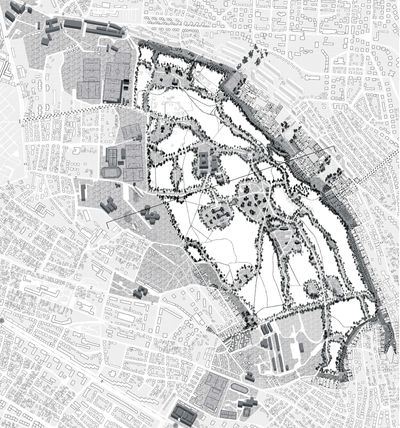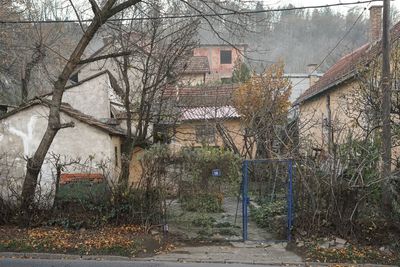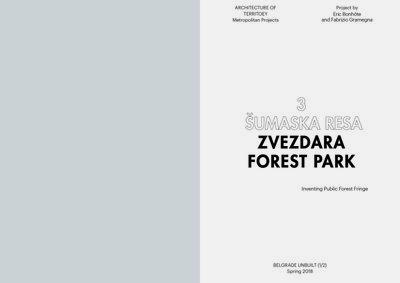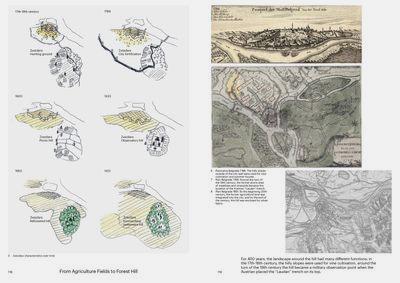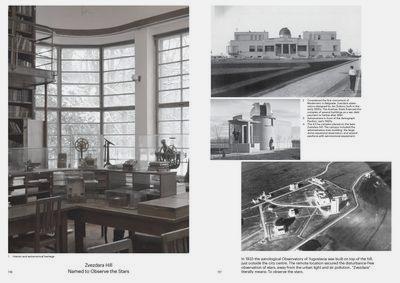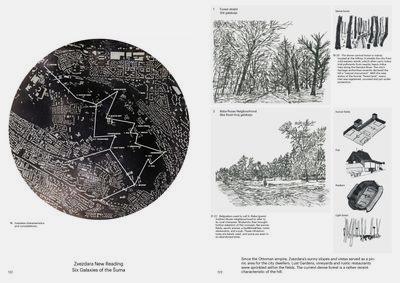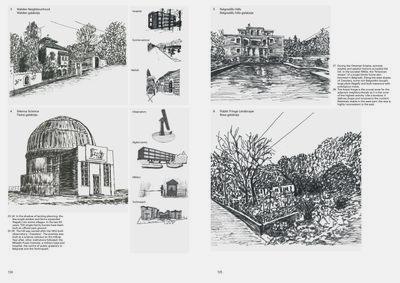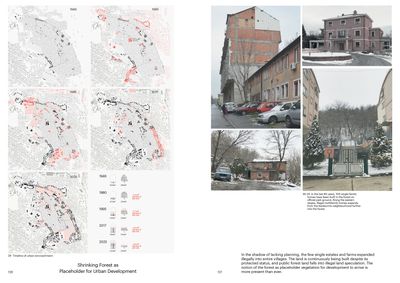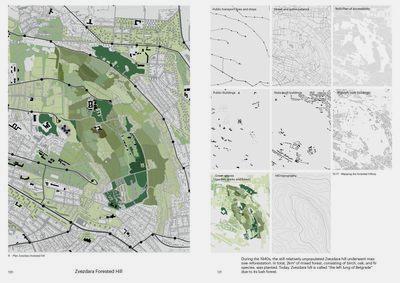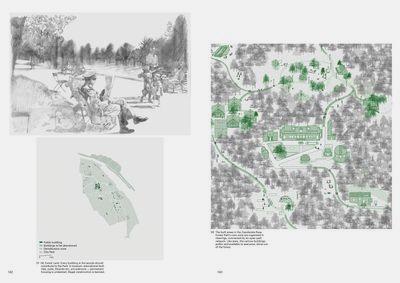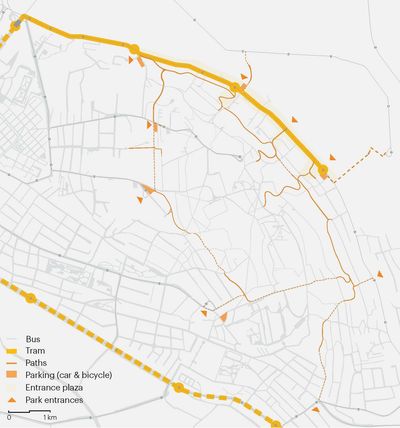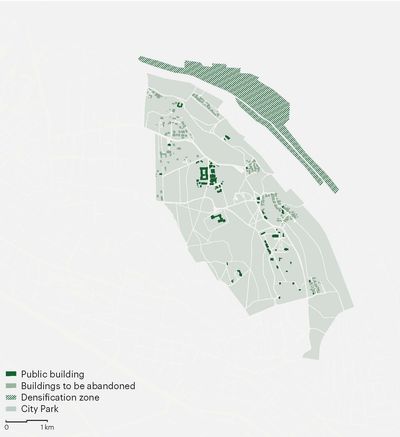Šumaska ResaZvezdara Forest Park: Inventing Public Forest FringeEric Bonhôte and Fabrizio Gramegna
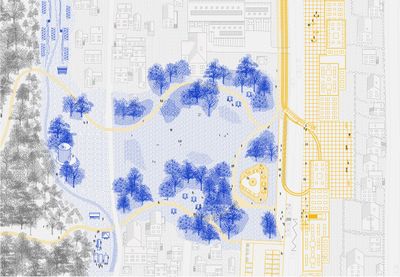
Zvezdara Hill is a park forest of Belgrade. The astronomic observatory of Belgrade, the Zvezdara, gave the hilltop and surrounding municipality its name. The now forested landscape has undergone several transformations throughout history. In the 19th century, the foothills east of the town’s centre were not yet integrated but were used by the city dwellers as a weekend resort or picnic area. After World War I, the hill was covered with meadows, vineyards and brickyards and the first farmers’ settlements developed around it. In the early 1930s, the modernist observatory was built on top of the hill. Most of the area was forested to protect the scientific complex from encroaching development, tucking the astronomers away behind quiet trees. Forestation of the hilltop went on until the late 50s, when it reached the dimensions of a fully-fledged forest. The observatory is nowadays deemed unsuitable for scientific work due to the light pollution of the surrounding city fabric and was moved to the more modern observatory on Mount Vidojevica in southern Serbia. In 1972 Zvezdara Hill was officially classified as a park forest and protected as a natural monument.

In recent years, the hilltop has also become somewhat of a science park, attracting many research and development facilities. The newly finished Science and Technology Park, the Mihailo Pupin Institute for Robotics, a hospital, children’s centres, and several schools and sports centres inhabit its immediate surrounding. Despite its protection, Zvezdara’s integrity as park and important public landscape is constantly contested: many illegal settlements creeping up the slopes have intruded into the forest’s fringe. The city government planned to give way to this urban pressure by converting some wooded areas into developable land in 2009. Due to heavy protests among the population, these plans were dropped. Earlier plans to extend parts of the forest towards the north and south to establish continuous green corridors were also never realised.
As the land of negotiation, torn between the private interest of the fast-developing neighbourhood and infrastructural and recreational importance, the forest has been cut down and replanted several times.
The project Zvezdara Forest Park: Inventing Public Forest Fringe explores how in today’s context of urban pressure, the built and the unbuilt can be thought of in a fruitful system. The former fragmented forest edge secures and stabilises the forest as a public park and guides future development. The proposal works with three integrated elements to secure the encroached forest as Forest Park. Firstly, improved park accessibility by extending the tramway line and new wood paths. Secondly, distinct Forest Core and Forest Fringe zones protect woods and host community and neighbourhood functions. Finally, a strict ban and long-term relocation of private buildings inside the Core Forest.
The project understands the Forest Resa as an advancement of today’s “spatial repertoire” in public forest parks, withstanding wood clearings and development forces.
